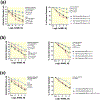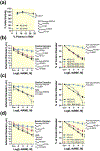Endothelial histone deacetylase 1 activity impairs kidney microvascular NO signaling in rats fed a high-salt diet
- PMID: 39007513
- PMCID: PMC11329346
- DOI: 10.1111/apha.14201
Endothelial histone deacetylase 1 activity impairs kidney microvascular NO signaling in rats fed a high-salt diet
Abstract
Aim: We aimed to test the hypothesis that a high-salt diet (HS) impairs NO signaling in kidney microvascular endothelial cells through a histone deacetylase 1 (HDAC1)-dependent mechanism.
Methods: Male Sprague Dawley rats were fed normal salt diet (NS; 0.49% NaCl) or HS (4% NaCl) for 2 weeks. NO signaling was assessed by measuring L-NAME induced vasoconstriction of the afferent arteriole using the blood perfused juxtamedullary nephron (JMN) preparation. In this preparation, kidneys were perfused with blood from a donor rat on a matching or different diet to that of the kidney donor. Kidney endothelial cells were isolated with magnetic activated cell sorting and HDAC1 activity was measured.
Results: We found HS-induced impaired NO signaling in the afferent arteriole. This was restored by inhibition of HDAC1 with MS-275. Consistent with these findings, HDAC1 activity was increased in kidney endothelial cells. We further found the loss of NO to be dependent upon the diet of the blood donor rather than the diet of the kidney donor and the plasma from HS-fed rats to be sufficient to induce impaired NO signaling. This indicates the presence of a humoral factor we termed plasma-derived endothelial dysfunction mediator (PDEM). Pretreatment with the antioxidants, PEG-SOD and PEG-catalase, as well as the NOS cofactor, tetrahydrobiopterin, restored NO signaling.
Conclusion: We conclude that HS activates endothelial HDAC1 through PDEM leading to decreased NO signaling. This study provides novel insights into the molecular mechanisms by which a HS decreases renal microvascular endothelial NO signaling.
Keywords: HDAC1; endothelium; high‐salt diet; kidney; microvasculature; nitric oxide.
© 2024 The Author(s). Acta Physiologica published by John Wiley & Sons Ltd on behalf of Scandinavian Physiological Society.
Conflict of interest statement
Conflicts of Interest
None
Figures





Update of
-
Endothelial Histone Deacetylase 1 Activity Impairs Kidney Microvascular NO Signaling in Rats fed a High Salt Diet.bioRxiv [Preprint]. 2023 Mar 10:2023.03.08.531731. doi: 10.1101/2023.03.08.531731. bioRxiv. 2023. Update in: Acta Physiol (Oxf). 2024 Sep;240(9):e14201. doi: 10.1111/apha.14201. PMID: 36945391 Free PMC article. Updated. Preprint.
References
-
- Mozaffarian D, Fahimi S, Singh GM, et al. Global sodium consumption and death from cardiovascular causes. N Engl J Med. 2014;371(7):624–634. - PubMed
-
- Palar K, Sturm R. Potential societal savings from reduced sodium consumption in the U.S. adult population. Am J Health Promot. 2009;24(1):49–57. - PubMed
-
- Sugiura T, Takase H, Ohte N, Dohi Y. Dietary Salt Intake is a Significant Determinant of Impaired Kidney Function in the General Population. Kidney Blood Press Res. 2018;43(4):1245–1254. - PubMed
-
- Graudal N, Jurgens G, Baslund B, Alderman MH. Compared with usual sodium intake, low- and excessive-sodium diets are associated with increased mortality: a meta-analysis. Am J Hypertens. 2014;27(9):1129–1137. - PubMed
-
- Tuomilehto J, Jousilahti P, Rastenyte D, et al. Urinary sodium excretion and cardiovascular mortality in Finland: a prospective study. Lancet. 2001;357(9259):848–851. - PubMed
MeSH terms
Substances
Grants and funding
LinkOut - more resources
Full Text Sources
Medical
Molecular Biology Databases
Miscellaneous

